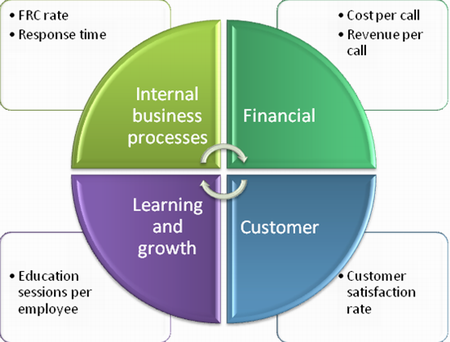Are you the owner of any kind of business? If so, then you definitely aim at satisfying the needs of your customers. Actually, there is nothing surprising about that, since the number of clients substantially affects the popularity and profitability of any company. So, what is the best way to be sure that your customers are satisfied with the level of servicing you are ready to offer them at the moment? The answer to this question seems to be quite easy at the first sight: you just have to make sure that your services or products correspond to their demands and requirements. The truth is, however, that lots of business owners face problems when it comes to accomplishing this task. Fortunately, there is something you can do to improve the situation. The Balanced Scorecard (BSC) is what you really need. Let us find out more about this tool and ways of its implementation.
The Balanced Scorecard helps business owners evaluate the effectiveness of their companies and identify those factors, which need immediate improvement. In other words, this tool may give you an idea of what is going on in your company and whether there is something you can do in order to change the situation for the better. No wonder, this system is frequently used in customer oriented call centers, since their basic objectives are to meet the expectations of their clients, generate high amount of sales and do everything to help people solve their problems as quickly as possible. It is quite understandable that if callers get what they are looking for, they will be more likely to deal with your company once again.
So, what does call center BSC involve? It uses four main perspectives in order to help you achieve all the missions you have set for your business. These perspectives include learning and professional growth, customer satisfaction, cost and profits and basic client-oriented processes. Each of these points, in its turn, incorporates a number of aspects, which are closely related to it. For example, when we talk about cost and profits, you will probably like to include the following points to this perspective: the cost of each separate outbound call, the revenue you will get in case the call you have made proves to be successful and, of course, the so-called “conversion rate”.
The same is about all other kinds of perspective mentioned above. Thus, learning and professional growth may involve coaching and educational trainings implemented by call center managers. Client-oriented processes, meanwhile, will incorporate call handling issues and business progress associated with them. Finally, customer satisfaction metric will imply the quality of outbound calls. As you see, all 4 perspectives are highly important for any call center and if you manage to combine all of them successfully, you will be able to evaluate the performance of your company in the most effective way.

